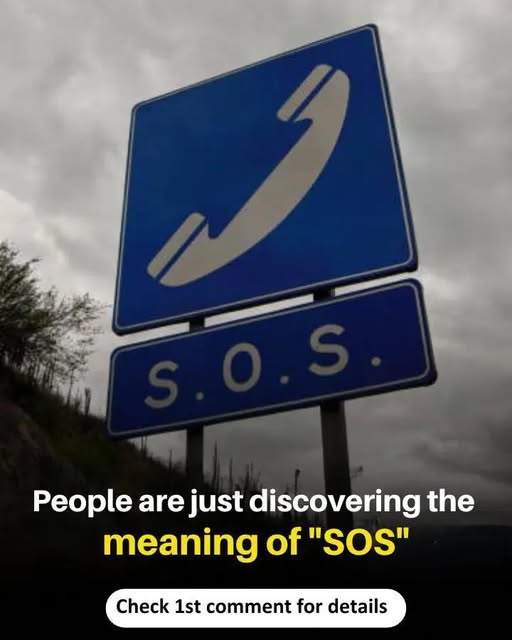We’ve all seen or heard the signal “SOS” at some point, whether in a movie, on a TV show, or even written out on the beach in a dramatic survival scene. It’s universally known as a cry for help, instantly understood as a distress signal no matter where you are in the world. Over the years, many people have assumed that SOS stands for phrases like “Save Our Souls” or “Save Our Ship,” with others thinking it means things like “Send Out Succor” or even “Help, Oh Help!” These interpretations have been widely shared, taught in pop culture, and passed along as common knowledge—but here’s the twist: none of them are actually true.

Believe it or not, SOS isn’t an acronym at all. It doesn’t stand for any particular words, phrases, or emotional expressions. The real meaning behind SOS has nothing to do with dramatic language and everything to do with practicality and efficiency. The truth dates all the way back to 1908, when SOS was officially adopted as the international distress signal, specifically for use in maritime communication. At the time, ships relied on Morse code to send and receive messages, and there was a pressing need for a standard emergency signal that could be used universally.
The signal needed to be unmistakable, simple, and easy to transmit and recognize—especially in chaotic or dangerous situations where clear communication could mean the difference between life and death. That’s where SOS came into play. In Morse code, SOS is written as three short signals, three long signals, and three short signals again: dot-dot-dot, dash-dash-dash, dot-dot-dot—or in Morse code notation: ··· ––– ···. It’s simple, distinct, and easy to remember.
Even more importantly, it was almost impossible to misinterpret. The pattern is symmetrical, repetitive, and could be sent quickly by telegraph operators, flashed using lights, or tapped out using sound or vibration. Because of these qualities, SOS was the perfect solution—it didn’t need to mean anything in words, because the pattern itself was powerful enough to communicate urgency and distress on its own. As Morse code became more common and widely understood, SOS became the go-to emergency signal at sea. But over time, as Morse code usage faded and verbal communication became more prominent, people started wondering what those three letters actually meant. And since humans love to assign meaning to things, various interpretations began popping up.
“Save Our Souls” and “Save Our Ship” became popular explanations, especially because they seemed fitting for emergencies. These phrases, however, are known as backronyms—words or phrases that are created after the fact to match an existing abbreviation. They may sound logical, but they were never part of the original intention. The reality is that SOS was never meant to be a set of initials or an acronym—it was simply chosen because it was easy to send, easy to understand, and difficult to confuse with anything else. Even today, with all the advancements in technology and communication, SOS remains a powerful symbol of emergency and distress. It’s used far beyond maritime settings—it shows up in pop culture, in everyday conversations, and even on clothing and artwork as a symbol of needing help or signaling trouble. While more modern systems like GPS emergency beacons and radio calls like “Mayday” have taken over in many real-life emergency situations, SOS still holds its place in the collective imagination. It continues to be one of the most recognized and respected distress signals in the world. So next time someone tells you that SOS stands for “Save Our Souls,” you can gently correct them with the truth—it doesn’t stand for anything at all. It was never about the words. It was about creating a signal that anyone, anywhere, could understand instantly. The beauty of SOS lies in its simplicity, and its effectiveness proves that sometimes the most powerful messages don’t need to be tied to language—they just need to be clear, universal, and impossible to ignore.





